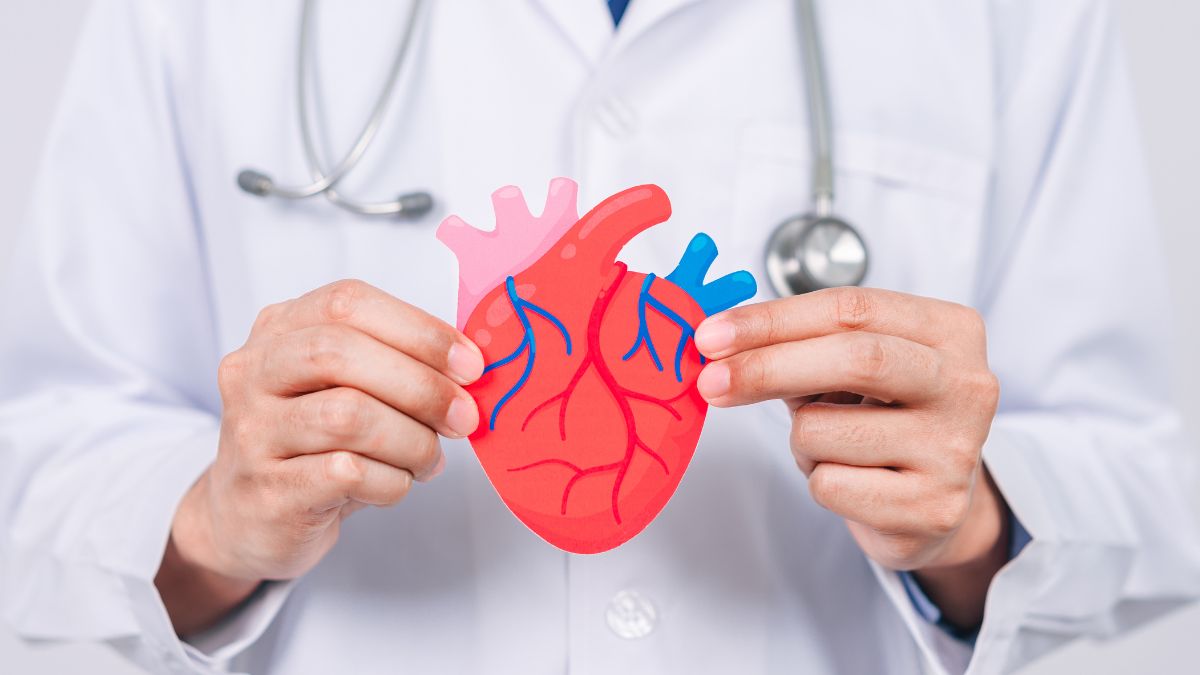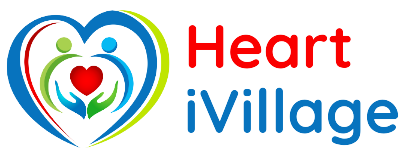Heart Functions
- Home
- Heart Functions

The Heart's Symphony: Unveiling the Marvel of its Functions
The human heart, often poetically referred to as the “engine of life” or the “seat of the soul,” is a magnificent organ that ceaselessly orchestrates the circulation of blood throughout our bodies. Beyond its cultural and metaphorical significance, the heart plays a fundamental and life-sustaining role in our physiology. In this extensive exploration, we embark on a profound journey to unveil the intricate functions of the heart, comprehending the remarkable mechanisms that underlie its indispensable role in maintaining our vitality and well-being.
At its core, the heart functions as a pump, and it performs this task with exceptional precision and endurance. This pumping action is pivotal for the distribution of vital nutrients and the removal of waste products throughout our bodies.
The Heart Functions as a Pump
The heart’s pumping action occurs through a rhythmic cycle known as the cardiac cycle. This cycle involves a series of coordinated events that lead to the contraction (systole) and relaxation (diastole) of the heart muscle. These phases work in harmony to ensure that blood flows smoothly through the heart and into the circulatory system, delivering oxygen and nutrients to tissues and organs while removing waste products like carbon dioxide.
Atria Contraction (Atrial Systole)
The cardiac cycle begins with the atria, the heart’s upper chambers, contracting. This contraction forces blood into the ventricles, the lower chambers of the heart. This phase, known as atrial systole, contributes to filling the ventricles with blood.
Ventricular Contraction (Ventricular Systole)
Following atrial systole, the ventricles contract, pushing blood out of the heart into the arteries. This phase, called ventricular systole, is responsible for ejecting oxygenated blood into the systemic circulation (from the left ventricle) and deoxygenated blood into the pulmonary circulation (from the right ventricle).
Relaxation (Diastole)
The final phase of the cardiac cycle is diastole, a period of relaxation when the heart chambers fill with blood. During diastole, the atria and ventricles relax, allowing blood to flow into them from the major veins (superior and inferior vena cava on the right side and pulmonary veins on the left side). This phase prepares the heart for the next cycle of contraction.
Blood Flow in Pulmonary and Systemic Circulation
To comprehend the heart’s role as a pump fully, it’s essential to understand the pathways of blood flow in both pulmonary and systemic circulation.
Pulmonary Circulation
Deoxygenated Blood: Deoxygenated blood from various parts of the body returns to the right atrium through the superior and inferior vena cavae.
Right Atrium to Right Ventricle: The right atrium contracts, pushing blood through the tricuspid valve into the right ventricle.
Right Ventricle to Pulmonary Artery: The right ventricle contracts, propelling deoxygenated blood through the pulmonary valve into the pulmonary artery.
Lungs: Oxygenation and Carbon Dioxide Removal: In the lungs, the blood undergoes oxygenation as oxygen is absorbed, and carbon dioxide is released. Oxygen-rich blood returns to the heart via the pulmonary veins.
Systemic Circulation
Oxygenated Blood: Oxygenated blood from the pulmonary veins enters the left atrium.
Left Atrium to Left Ventricle: The left atrium contracts, pushing blood through the bicuspid (mitral) valve into the left ventricle.
Left Ventricle to Aorta: The left ventricle, the heart’s powerhouse, contracts powerfully, expelling oxygen-rich blood through the aortic valve into the aorta.
Distribution to the Body: The aorta and its branches distribute oxygenated blood to various tissues and organs throughout the body. In the capillaries, oxygen and nutrients are released, while waste products like carbon dioxide are collected.
Return of Deoxygenated Blood: Deoxygenated blood, laden with waste products, returns to the heart through venules and veins, specifically the superior and inferior vena cavae, ready to begin the cycle anew.
Understanding these intricate pathways helps us appreciate the heart’s role in maintaining a continuous and balanced flow of blood to all parts of the body.
Blood Pressure Regulation
One of the critical aspects of the heart’s function is its role in regulating blood pressure. Blood pressure is the force exerted by the blood against the walls of the arteries as it circulates. Maintaining blood pressure within a healthy range is crucial for overall health, as it ensures that tissues and organs receive an adequate supply of blood.
Systolic and Diastolic Blood Pressure
Blood pressure is typically measured as two values: systolic and diastolic pressure. Systolic pressure represents the force exerted on artery walls during heartbeats, primarily during ventricular systole (contraction). Diastolic pressure represents the pressure in the arteries between heartbeats, during ventricular diastole (relaxation).
The balance between systolic and diastolic pressures is essential for maintaining continuous blood flow while preserving the integrity of the arterial walls. Abnormalities in blood pressure can strain the heart and lead to various cardiovascular conditions, including hypertension (high blood pressure) or hypotension (low blood pressure).
Autonomic Nervous System and Blood Pressure
The autonomic nervous system plays a vital role in regulating blood pressure. It consists of two main branches: the sympathetic and parasympathetic nervous systems.
Sympathetic Nervous System: When the body perceives stress or increased activity, the sympathetic nervous system is activated. This leads to the release of norepinephrine, which causes the heart rate to increase and blood vessels to constrict, thereby raising blood pressure. This response is known as the “fight or flight” reaction and prepares the body for action.
Parasympathetic Nervous System: In contrast, the parasympathetic nervous system, often referred to as the “rest and digest” system, promotes relaxation and conservation of energy. It slows down the heart rate and dilates blood vessels, which lowers blood pressure during periods of rest and recovery.
The intricate interplay between these two branches of the autonomic nervous system allows the body to adjust to varying demands, ensuring that the heart can pump more blood when needed (e.g., during exercise) and conserve energy when at rest.
Electrical Signaling: The Heart's Inherent Rhythm
While the heart’s rhythmic contractions may seem automatic, they are guided by a specialized electrical conduction system within the heart muscle itself. This system ensures that the heart contracts in a coordinated and sequential manner, facilitating efficient blood flow.
Components of the Cardiac Conduction System
The cardiac conduction system consists of several key components:
Sinoatrial (SA) Node: Often referred to as the heart’s natural pacemaker, the SA node is a small cluster of specialized cells located in the right atrium. It generates electrical impulses at regular intervals, initiating each heartbeat.
Atrioventricular (AV) Node: The electrical impulses generated by the SA node travel to the AV node, located between the atria and ventricles. The AV node briefly delays the impulse, allowing the atria to contract and push blood into the ventricles before ventricular contraction begins.
Bundle of His and Purkinje Fibers: From the AV node, the electrical signal travels down the Bundle of His, which branches into Purkinje fibers. These fibers spread the signal rapidly throughout the ventricles, causing them to contract in a coordinated fashion, from the bottom up.
This precise electrical signaling system ensures that the atria and ventricles contract in a synchronized manner, optimizing the heart’s pumping efficiency.
Electrocardiogram (ECG or EKG)
The electrical activity of the heart can be recorded and displayed as an electrocardiogram (ECG or EKG). An ECG provides valuable information about the heart’s rhythm and electrical conduction. It is a crucial diagnostic tool in cardiology, helping healthcare professionals identify various heart conditions, such as arrhythmias or conduction abnormalities.
Adaptation to Exercise: The Athletic Heart
The heart is remarkably adaptable and can undergo beneficial adaptations in response to regular physical exercise. These adaptations collectively characterize what is often referred to as the “athletic heart.”
Cardiac Hypertrophy
Regular exercise, particularly aerobic and endurance training, can lead to cardiac hypertrophy, a phenomenon where the heart’s chambers increase in size. Cardiac hypertrophy allows the heart to hold more blood, pump it more efficiently, and enhance its overall performance.
Improved Stroke Volume
Exercise can also improve stroke volume, which is the amount of blood pumped by the heart with each contraction. A well-trained heart can eject more blood with each beat, which is beneficial for delivering oxygen and nutrients to active muscles during physical activity.
Lower Resting Heart Rate
A well-conditioned heart tends to have a lower resting heart rate. This is because a more efficient heart can pump the required amount of blood with fewer beats, saving energy and reducing wear and tear on the cardiovascular system.
Enhanced Oxygen Delivery
Regular exercise improves the heart’s ability to deliver oxygen to the body’s tissues. This is achieved through various mechanisms, including increased capillarization (the formation of new blood vessels) and improved oxygen-carrying capacity of the blood.
Understanding these adaptations underscores the importance of physical activity in maintaining heart health and overall well-being.
Temperature Regulation: Heart's Response to Heat and Cold
Temperature can significantly influence heart rate and cardiovascular responses. The heart’s ability to adapt to varying environmental temperatures plays a crucial role in maintaining homeostasis and overall health.
Heat Regulation
In hot conditions, the body’s thermoregulatory mechanisms come into play to prevent overheating. The heart responds to heat by:
Increased Heart Rate: To dissipate excess heat and maintain a stable body temperature, the heart rate increases. This allows for enhanced circulation to the skin, promoting heat loss through perspiration and radiation.
Vasodilation: Blood vessels in the skin dilate (widen), facilitating heat dissipation. This also contributes to a drop in blood pressure as blood flow is redistributed.
Fluid Balance: Sweating helps cool the body but can also lead to fluid and electrolyte loss. Adequate hydration is essential to maintain cardiovascular function in hot conditions.
Cold Regulation
In cold conditions, the heart responds by:
Increased Heart Rate: The heart rate may increase to generate more heat through increased metabolic activity. This helps to counteract the heat loss caused by exposure to cold temperatures.
Vasoconstriction: Blood vessels in the skin constrict (narrow), reducing blood flow to the skin’s surface and conserving heat. This can lead to an increase in blood pressure as blood is redirected to vital organs.
Shivering: Shivering is a muscular response to cold that generates heat through increased metabolic activity.
The heart’s ability to adapt to temperature changes is essential for maintaining core body temperature and overall homeostasis.
Surgeries We Offer
- Beating Heart Bypass Surgery
- Beating Heart Bypass Surgery In Acute MI
- Beating Heart Bypass Surgery In Poor LV Function
- Endoscopic Vein Harvesting
- Valve Replacements Single or Double
- Combined CABG & Valve Replacements
- Repair of Congenital Heart Defects
- Closed Heart Surgery
- Pericardiectomy
- Peripheral Vascular Surgeries
- Surgery Of Aortic Dissection
- Conventional Bypass Surgery On Pump
Emergency Cases
Please feel welcome to contact our friendly reception staff with any general or medical enquiry call us.
